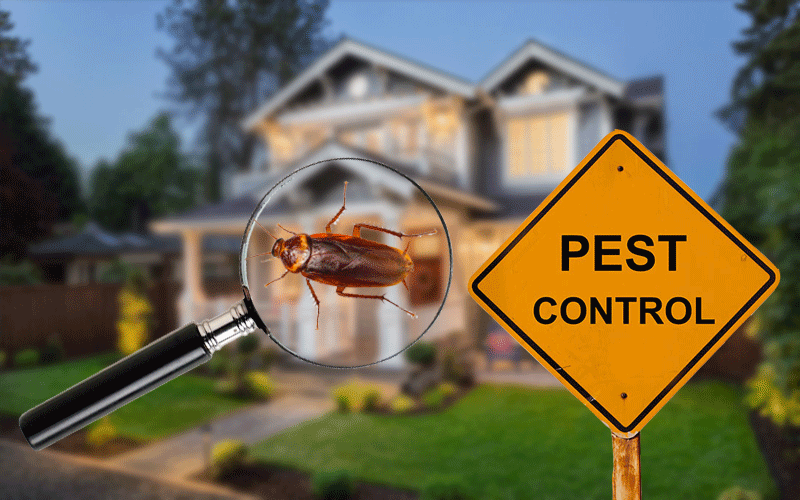A1 Bed Bug Exterminator Charlotte - Reliable and Budget-friendly Services
Wiki Article
Bed Pest Therapy Failure: Contrasting Chemical Vs. Non-Chemical Solutions
In the realm of insect control, specifically when taking care of the persistent issue of bed bugs, the option in between chemical and non-chemical treatment options can be a pivotal one. Both strategies use distinct advantages and downsides, influencing elements such as effectiveness, safety considerations, and overall price. By examining the nuanced details of each approach, a clearer understanding of which course to seek in resolving a bed insect invasion can be attained.Performance of Chemical Therapies
Chemical treatments for bed pest invasions have been extensively acknowledged for their rapid and powerful effectiveness in eliminating these pests. When taking into consideration the efficiency of chemical therapies, it is vital to understand that they can provide a complete and quick option to a bed bug trouble.Furthermore, chemical therapies have the advantage of supplying residual effects, indicating that they can continue to eliminate bed bugs even after the initial application. This residual action is especially useful in combating any kind of potential re-infestations. Furthermore, the quick action of chemical therapies can bring relief to individuals dealing with extreme bed bug invasions, allowing them to restore control of their home quickly.
Security Problems With Chemical Solutions
When utilizing chemical services for bed bug treatment is ensuring the safety and security of occupants and the environment,One important element that needs cautious consideration. While chemical treatments can be effective in eliminating bed pests, they might posture risks if not dealt with appropriately. Among the key safety worries with chemical options is the potential harm they can create to human health and wellness. Exposure to particular chemicals made use of in bed bug treatments can result in breathing concerns, skin irritation, or various other adverse responses, specifically in people with pre-existing conditions or sensitivities. Additionally, improper application or dosage of chemical pesticides can lead to harmful deposits remaining in the treated location, positioning long-term wellness dangers to occupants.In addition, the ecological effect of chemical services is another substantial consideration. Some pesticides made use of in bed insect treatments may be hazardous to helpful pests, wildlife, and ecosystems if they leach right into the soil or water systems. It is important to utilize chemical treatments sensibly, complying with safety standards, and thinking about much less poisonous options to minimize these dangers and make certain the safe and effective administration of bed pest infestations.
Advantages of Non-Chemical Approaches
Thinking about the prospective security worries and ecological effect connected with chemical services for bed bug treatment, discovering non-chemical techniques presents an encouraging option with numerous unique advantages. Non-chemical treatments are environmentally pleasant, as they do not contribute to air or water contamination, making them a sustainable option for pest control.In addition, non-chemical services can be reliable in targeting bed insects, including hard-to-reach locations where chemical therapies may not pass through. Approaches such as heat treatment, vacuuming, heavy steam cleansing, and bed mattress encasements give comprehensive removal without making use of damaging chemicals. Furthermore, non-chemical approaches can be much less disruptive, calling for minimal prep work and enabling quicker reentry right into treated areas. On the whole, opting for non-chemical bed insect therapy approaches not only prioritizes safety and security and environmental management yet also makes sure thorough and efficient insect control.
Limitations of Non-Chemical Treatments

Furthermore, non-chemical therapies often need several applications to attain successful elimination. This can be time-consuming and may not constantly assure total removal of all bed bugs and their eggs, especially in hard-to-reach or covert locations.
In addition, the success of non-chemical therapies greatly relies upon appropriate execution and thoroughness, which can be testing for people without professional expertise. Poor application of non-chemical methods may result in insufficient elimination, causing relentless infestations and the demand for added treatments.
For that reason, while non-chemical therapies have their benefits, it is necessary to acknowledge these restrictions and consider them when establishing one of the most reliable strategy for taking care of bed insect invasions.
Expense Comparison: Chemical Vs. Non-Chemical Options
Provided the limitations connected with non-chemical therapies, an important aspect to evaluate in the context of bed bug monitoring is the price contrast between chemical and non-chemical choices. Chemical treatments normally entail the application of insecticides by experts, which can range from $250 to $900 per area, relying on the severity of the invasion and the dimension of the location to be treated. In contrast, non-chemical therapies like warm therapy or steam can be much more pricey, with costs ranging from $1,000 to $6,000 for an entire home. While the initial price of chemical therapies may appear lower, multiple therapies might be needed to fully get rid of the problem, potentially enhancing the total expense. On the other hand, non-chemical options might offer a more lasting and environment-friendly option, although they can be cost-prohibitive for some people. Ultimately, when taking into consideration the cost of you can try this out bed insect therapy alternatives, it is essential to weigh the in advance costs versus the efficiency and lasting sustainability of the picked approach. moved hereVerdict

Thinking about the possible safety and security concerns and environmental effect linked with chemical solutions for bed insect therapy, discovering non-chemical strategies presents an appealing option with a number of distinctive benefits.Given the restrictions linked with non-chemical treatments, an essential facet to assess in the context of bed pest management is the cost contrast between chemical and non-chemical options. In contrast, non-chemical therapies like warmth treatment or steam can be much more costly, with expenses varying from $1,000 to $6,000 for an entire home. While the preliminary price of chemical therapies may seem lower, several treatments may be called for to totally eradicate the infestation, possibly raising the total price.In conclusion, when comparing chemical and non-chemical bed bug treatment choices, it is important to think about efficiency, safety and security, advantages, constraints, and cost.
Report this wiki page